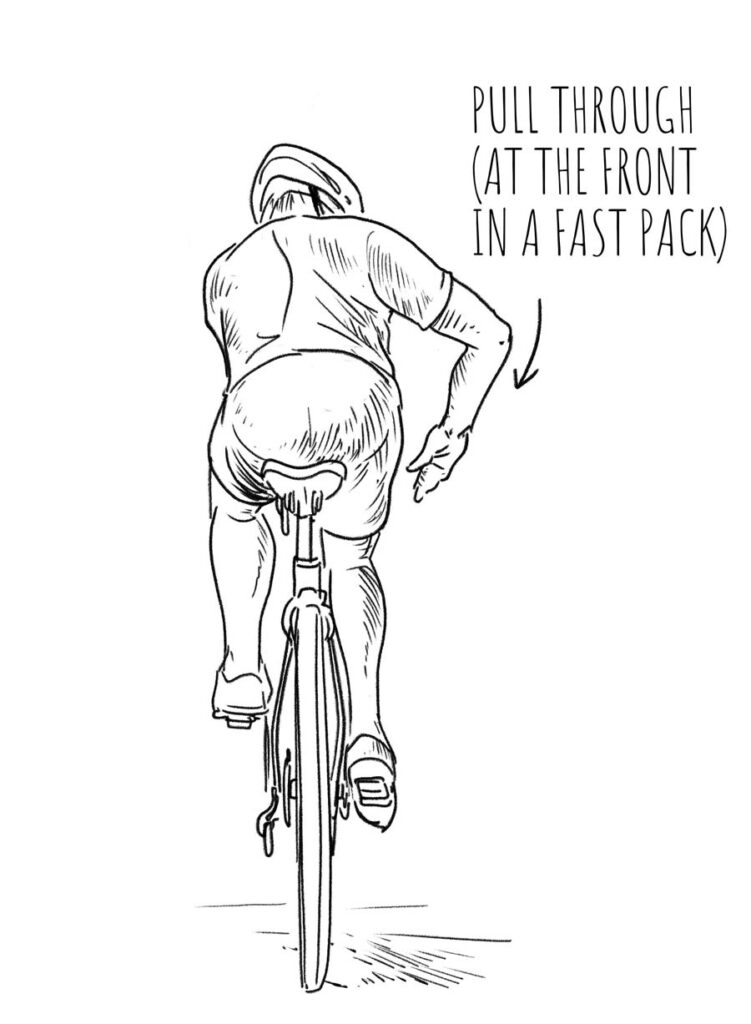Bicyclists use special hand and vocal signs on the road to communicate hazards, obstacles, and general information when riding in a peloton. Because safety is key, cyclists who ride on their own should familiarize themselves with these signals before joining a pack. Riders up front are responsible for the rest. Watch and copy their gestures for those behind you. Follows are common signals cyclists use and what they mean to other riders in the peloton.
Signaling before a turn
Possibly the most basic of signs. Make it ahead of time to inform the peloton of your intention to turn. It also serves to communicate your move to motorists sharing the road with you. How you execute it depends on the current traffic and your surroundings. The more cars in an urban environment, the more time and care you take to communicate your upcoming maneuver.
On a non-congested road, the signal can come just before the turn. Even if it’s quiet, check over your shoulder to make sure there is no car approaching behind you, and look up the road ahead for oncoming traffic in the opposite direction as you may turn in their path.
Fully extend your arm and point to show the direction of the turn, right arm to do right, and left arm to the left. Move toward the middle of the road as you approach the turn. If coming up on a junction, take a prominent position in the center of your lane before indicating, again with your arms, the direction you plan to go.
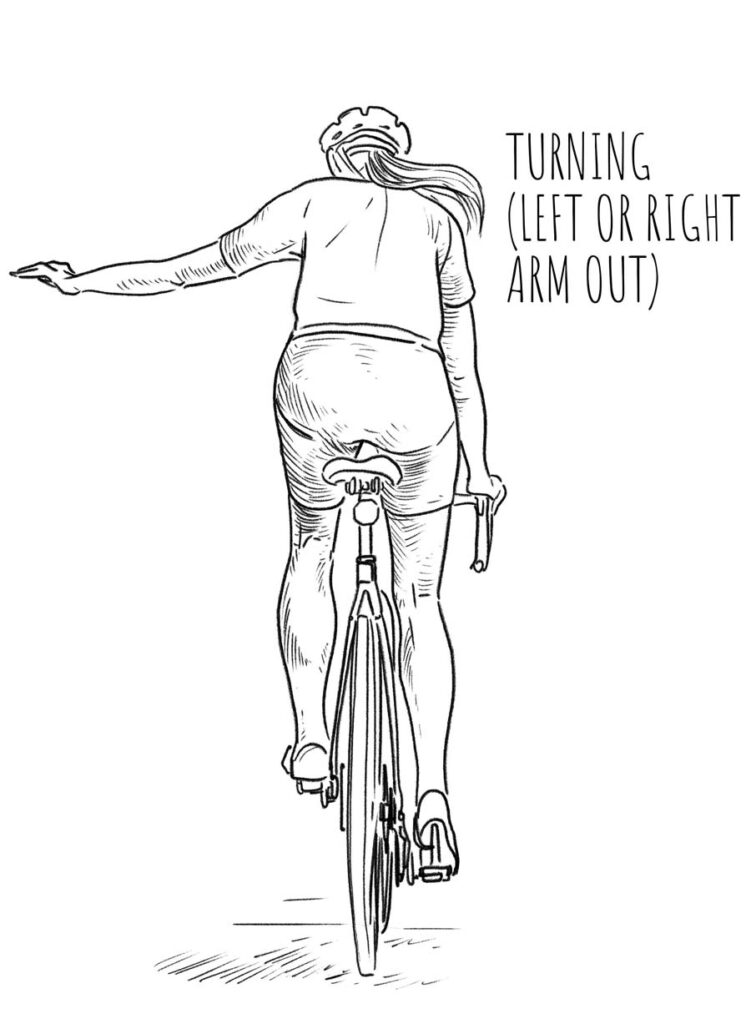
Slowing and stopping
For an upcoming intersection, red light or road hazard, let the other cyclists know you intend on slowing down or stopping. Avoid last-minute signals to avert a massive pileup! Don’t slow or brake until you’ve made the sign.
To let others know you are slowing down, place your hand out to your side and down, with your palm facing down, and move your arm up and down, similar to if you were patting the head of a dog.
And when coming to a full stop, you have a choice. Raise your hand up in the air where everyone can see it, like a student would do in class. Or drop your hand behind you, near your seat, with the palm facing away from you. Cyclists in a peloton are used to watching the low-backs of the rider in front of them, so the stop signal made behind you is in their line of sight.
In the event of an emergency, when you need both hands on the brakes, use your voice (if you have time) and belt out “stopping” as loud as you can. Then hope the riders behind you do the same.
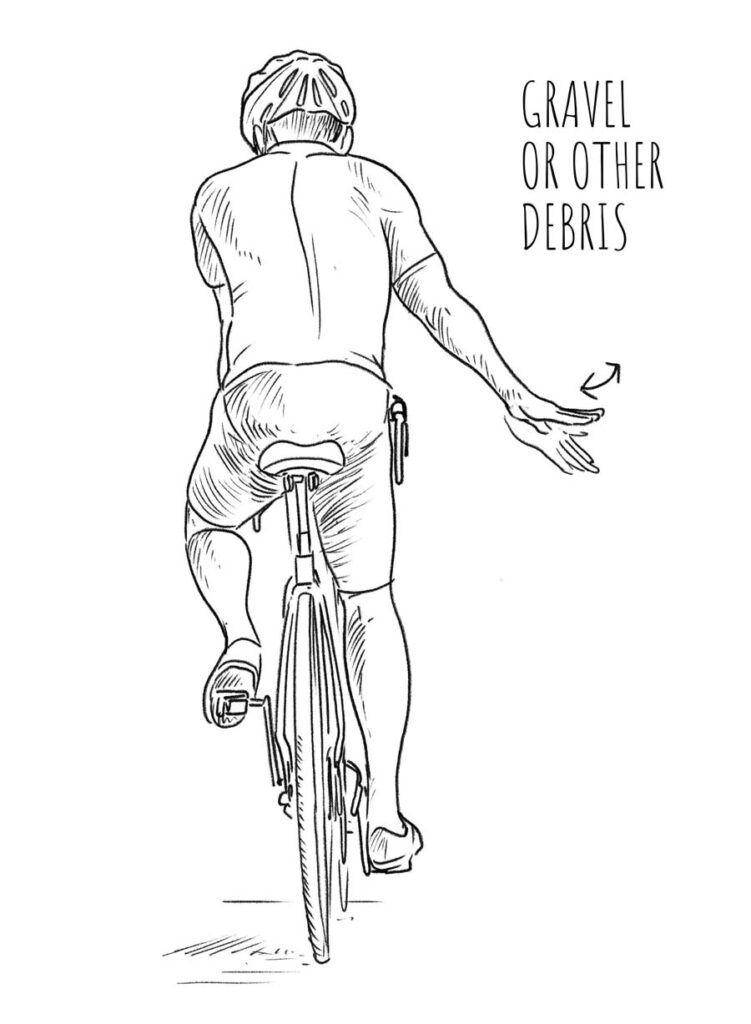
Road hazards and potholes
While every cyclist prefers to ride on smooth, pristine roads, it isn’t always possible (sigh). Potholes, road furniture and obstacles, like chunks of metal or junk on the side of the road, need to be avoided. They can cause an unwanted crash and do a good amount of damage to your bicycle, too.
The riders in the front have the best view of upcoming road conditions. It is their responsibility to point out, literally with their finger, where the massive wheel-eating hole, or any solid object to avoid, is located. The signal should follow down the line, permitting everyone to avoid it. If it is massive and could cause a crash, don’t be shy about using your voice too.

Gravel or sand
Gravel or sand on the road is treacherous to a peloton of cyclists, particularly on a corner where bicycles pass at speed at an angle. Bicycle wheels and loose material like gravel or sand don’t mix. Hitting a patch can cause your front wheel to wash out, sending you, and potentially the rest of the peloton, to the ground.
The signal here is very similar to road hazards and potholes, but instead of simply pointing to it, hold your arm down with the palm open to the road and move your hand back and forth. It is like stopping or slowing: the difference being the hand goes side to side as if wiping the floor and not up and down.
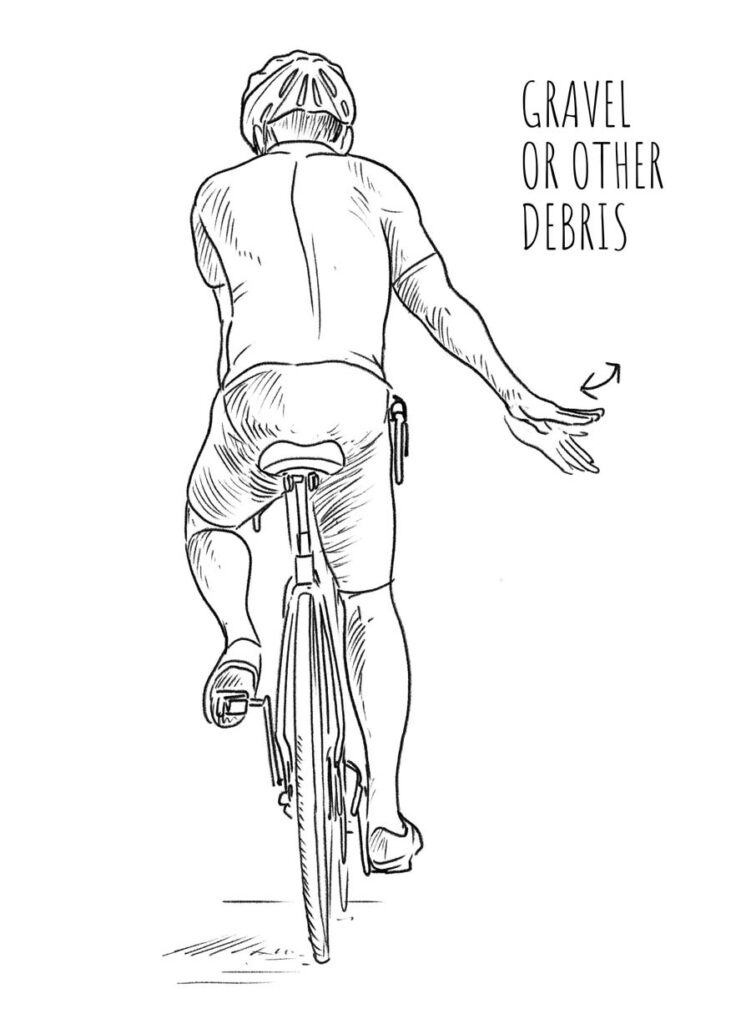
Upcoming parked cars or pedestrians
Pelotons in an urban setting have to deal with parked cars and pedestrians on the side of the road. As North America drives on the right-hand side of the road, most of the parked cars and people will be on your right. Place your hand behind your back and point to the left (like get a load of this), or move your right hand back and forth, emphasizing the left as if shooing away a fly as you change your line to avoid whatever it is.
Don’t wait until the last minute. Give plenty of notice when changing your line. Riders behind you do not have the same view and can easily ride square into the back of a parked car, someone running, or other cyclist riding at a slower speed. This can cause a particularly life-threatening accident for all parties, so make that sign clear to those behind you.
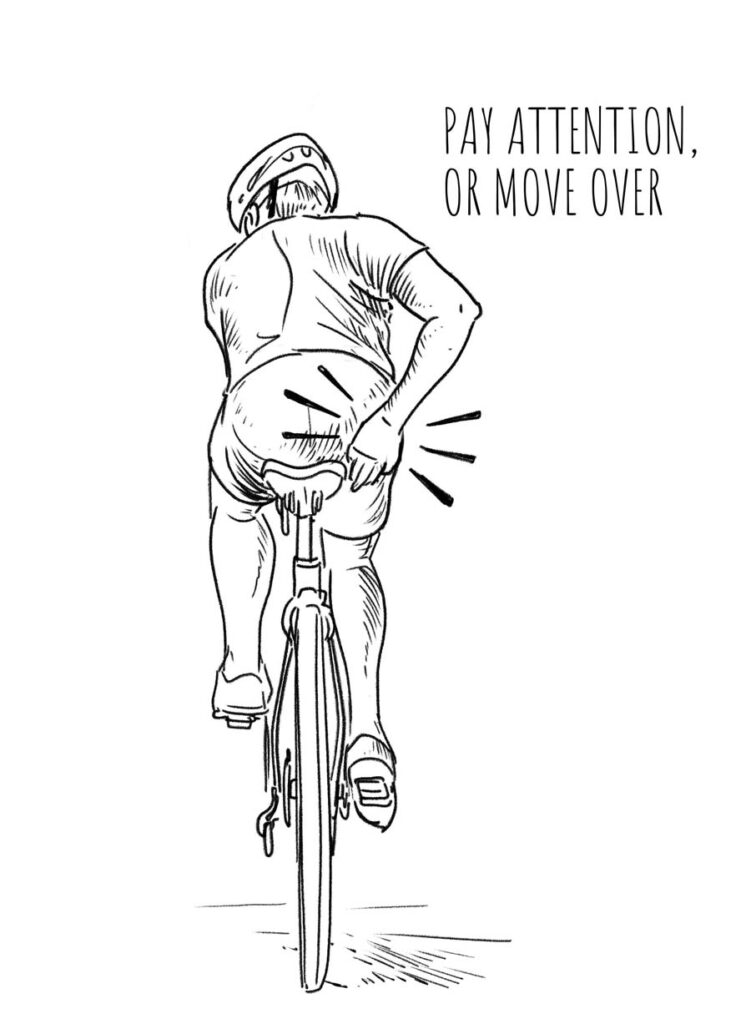
Oncoming traffic
While not a traditional hand signal, it is important. Riders use their voice to signal any oncoming traffic. It can vary by region and who taught you the secret signs of the peloton clan. I’m making light of it, but do what you feel is best, keeping the group’s security in mind.
Riders at the back, (yes, at the back this time), call out “car back” to announce any car or truck overtaking the peloton. The same principle applies to the front, with “car up” for oncoming traffic, but since the greater danger falls on vehicles overtaking the group, “car back” is more common..
Speed bumps
Residential neighborhoods, around schools and pedestrian zones and town centers are hotbeds for speed bumps.They normally don’t cause a big problem to the peloton. But if just one cyclist in the bunch is not paying attention and their front wheel hits a speed bump, it can easily throw them off balance or cause their hands to slip off of the handlebars, both of which can cause a nasty crash.
Riders up front that see an oncoming speed bump should maintain their grip on the handlebars and simultaneously flick both of their elbows to the side at the same time. Think of it as doing the chicken dance seated on your bike.
Moving off the front
Any cyclist not at the front saves up to 40% in energy output as compared to those at the head of the pack. Riders at the front of the peloton do most of the work as they have to confront the elements, such as strong winds and heavy rain. Not very fun.
At some point, they move away from the head of the pack to rest, passing the responsibility onto the next rider behind them. To signal the move, they don’t remove their hands from the handlebars. They Just flick their elbows a few times on the side they plan to move to, followed by a glance over their shoulder to verify the passage is safe.
The next rider behind takes their place and the rider formerly on the front progressively moves to the back of the pack.
